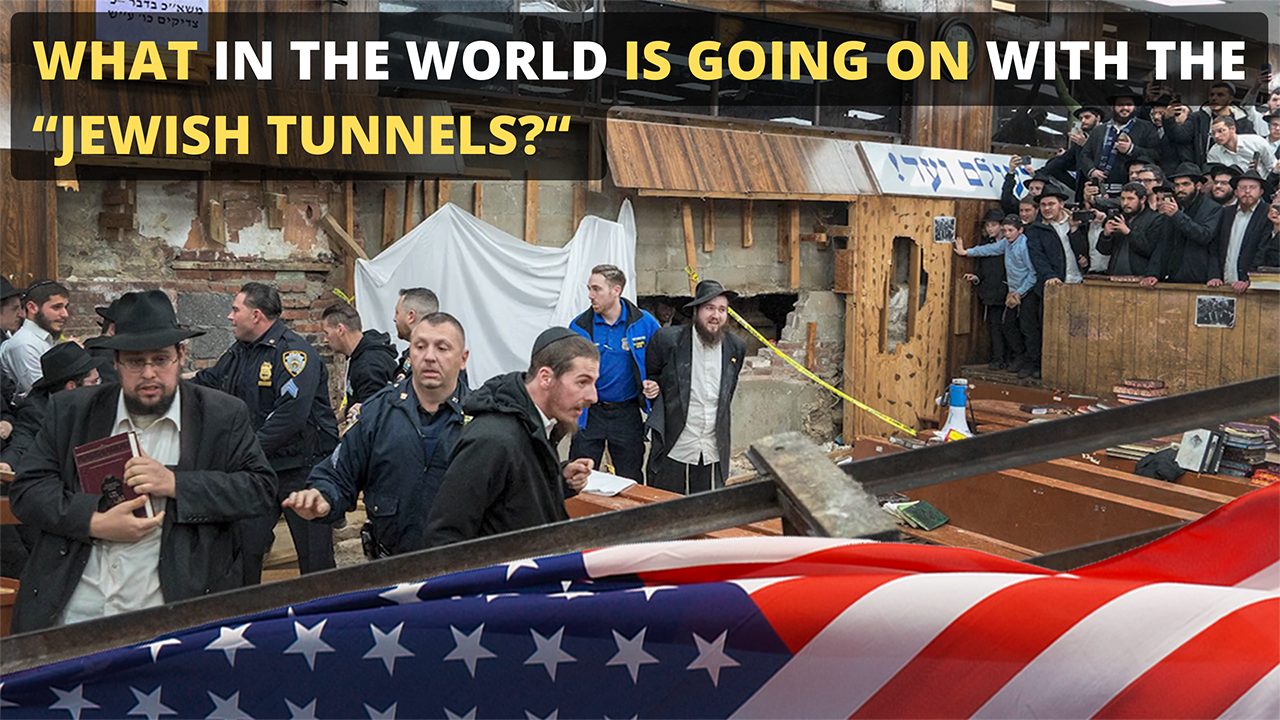
A Chabad-Lubavitch synagogue in New York City has become the center of controversy after an underground tunnel was discovered by city officials and Chabad leaders, reviving old antisemitic tropes and even causing a commotion between city authorities and worshippers who supported the tunnel’s construction.
A secret tunnel in a NYC synagogue leads to a brawl between police and worshippers https://t.co/v3Kg7654vc
— The Associated Press (@AP) January 9, 2024
The illegal underground tunnel, revealed by city inspectors to be 60 feet (18.3 meters) long and 8 feet (2.4 meters) wide, was uncovered beneath the Chabad-Lubavitch global headquarters in Crown Heights, a neighborhood in Brooklyn prominent for having a significant Jewish population. The tunnel was mostly empty except for dirt, debris, and tools used for constructing it.
Inspectors also found that the tunnel connected the headquarters, known as 770, with other nearby buildings owned by the Hasidic group through openings cut into basement walls. The “single linear underground tunnel” was excavated without the approval of the city’s Department of Buildings. It also compromised the stability of the several buildings surrounding the Chabad-Lubavitch complex, prompting a partial order to vacate them and citations against their owners.
However, the illegal underground tunnel not only compromised the structural stability of buildings in the religious complex but also brought back into life old antisemitic tropes and stereotypes, especially those that claim Jews secretly traffic, abuse, and ritualistically kill children, as reported by the Anti-Defamation League (ADL).
The ADL also added that the underground tunnels were used as an excuse to claim that Jews had disproportionate power globally and that they could do whatever they wanted without needing permits. Aside from making references to “sewer Jews,” others even connected the tunnels to the ongoing war between Israel and Hamas, where some social media users claimed that while Hamas used underground tunnels for self-defense, Jews had some nefarious plans with the tunnel.
But contrary to these antisemitic claims, the underground tunnel discovered in 770 was not made for some conspiracy or evil plan. Instead, it was an effort made by a group of young Chabad students to expand the center and ultimately fulfill the wishes of Rabbi Menachem Mendel Schneerson, a former head of the Chabad-Lubavitch movement widely revered by some of his followers as a messianic figure.
Nine Orthodox Hasidic students, who were all in their late teens and early 20s, were arrested by the NYPD and charged with misdemeanor and disorderly conduct, while three others were issued a summons. The group, which Chabad spokesperson Motti Seligson described as “extremist students,” also reportedly hired migrant workers to finish the tunnels and that the workers slept there for weeks.
Efforts made to seal off the underground tunnel after its discovery were anything but peaceful, as a fight between city authorities and some worshippers in the synagogue broke out after proponents of the tunnel staged a protest inside the center, which immediately turned violent after the NYPD entered to make arrests.
Leaders of the Chabad-Lubavitch movement quickly condemned the action made by the students, with Seligson criticizing the “extremists who broke through the wall to the synagogue, vandalizing the sanctuary, in an effort to preserve their unauthorized access.”
Many rabbis also denounced the students' actions while also hoping they would get the help they needed.
“I’m not excusing their actions,” Queens Rabbi Shaul Wertheimer, who was in the side prayer room of the synagogue when the situation escalated, said regarding the incident. “But someone who’s willing to destroy, vandalize, and deface a synagogue, their own synagogue at that, I would have to imagine they need a little bit of help, and I hope they’re able to get that help.”
